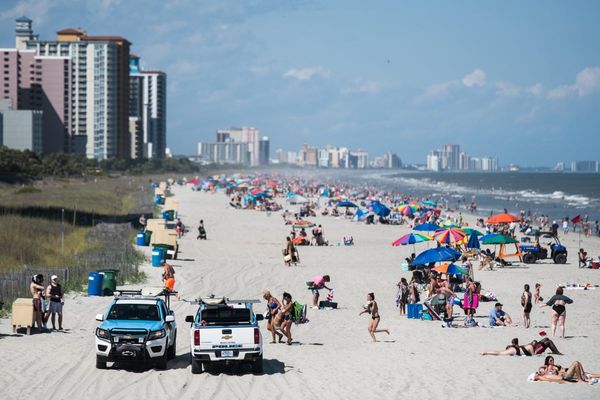DEATH VALLEY NATIONAL PARK, Calif./Nevada — About 1.3 million people visit the hottest place on Earth each year. On Tuesday, just a handful were at Death Valley National Park.
After a rainstorm Friday dumped 1.46 inches of water on the normally arid desert basin, flushing dirt, rocks and debris over some of the 1,000 miles of park roads, the main artery through Death Valley, state Route 190, remains closed.
Initially, about 30 miles of Route 190 were partially or fully covered by debris. By Tuesday, crews had cleared 20 of those miles.
The park, while technically open if you can walk in, which isn’t recommended because of the extreme heat, is closed to vehicle traffic. But on Tuesday, reporters were given access to see some of the destruction.
“We’re still in the assessment period,” said park ranger Matthew Lamar, when asked how long it might take to reopen all the roads and fix the damage. “We are 3.4 million acres — almost the size of Connecticut. We have 1,000 miles of roadway, both paved and unpaved.”
Some of those roads, like the Beatty Cutoff Road, are covered in debris or even washed away.
While the California Department of Transportation expects Route 190 to be reopened on Aug. 17, other roads inside the park could take much longer.
Daylight Pass Road, with its large chunks of asphalt torn away, looked like a layer cake, some of its pieces cut out and scattered across the desert floor.
At the Inn at Death Valley hotel, cars were still stuck in the mud and being towed out.
In the hours after the storm, 1,000 people — about 500 visitors and 500 workers and staffers — were stranded inside the hottest place on Earth. Death Valley set the record for the highest temperature ever recorded on the planet, at 134 degrees in 1913. The park normally gets about 1.9 inches of rain a year.
A California Highway Patrol helicopter and a Navy aircraft have done aerial searches, with no deaths or serious injuries reported.
“I was worried about people’s safety,” said Anastasia Roy, an education ranger with the park. “Then I was relieved to hear they were safe.”
Most visitors have been able to leave, while some — there isn’t an official count, but it could be 10, if that — have opted to stay, including a few who are camping.
“This is the worst I’ve seen it in 20 years,” David Blacker, the executive director of the Death Valley Natural History Association, which runs the gift store at the Furnace Creek Visitor Center, said of the storm.
The gift store was open, but only about three people had come in on Tuesday.
Lamar said it’s too early to know if the recent deluge of rain will lead to a “superbloom” like in 2016, when yellow wildflowers blanketed the desert, because any bloom wouldn’t happen until the spring.
“We’ll find out,” Lamar said. “It’s hard to predict.”







